Hoverflies
The hoverfly is interesting because of its maneuverability,
high peak speed, and relatively low wing stroke amplitude
compared to some other insects. The wing kinematics are
still non-trivial.
(figures from J. Brackenbury,
Insects in Flight
London: Blandford.)
|
|
|

beginning of downstroke (Brackenbury, fig. 11a, p.28)
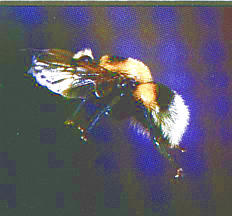
end of downstroke (Brackenbury, fig. 11b, p.28)
|
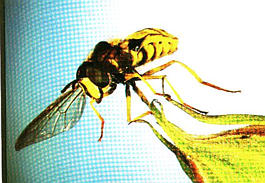
end of downstroke during take off (Brackenbury, fig. 12a, p.29)
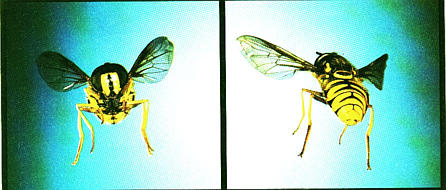
Front and back view at same phase in stroke cycle. Note deformed wing shape.
(Brackenbury, fig. 51, p.98)
|
|
Wing Engineering
Wings are not rigid and not smooth. Wing bending will increase
tip velocity during certain phases of the wing stroke, which
may affect performance. (What affect does wing compliance have on
lift/drag?)

Note deformed wing shape in
leptoterna bug during downstroke (Brackenbury fig.58, p.106).
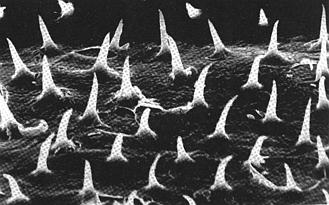
Wing features less than 100 micron in height may help to
improve laminar flow properties (Brackenbury fig.75, p.142).
Dragon Flies
Dragon Flies have great agility and power, but the wing
kinematics seem as compex as the hover flies. The extra set
of wings probably increases fabrication difficulty.
(Figures from I. Pecile,
Libellule
Udine: Carlo Lorenzini Editore, 1984.
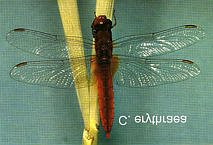
C. erythraea.
(Pecile, fig.133, p.121)
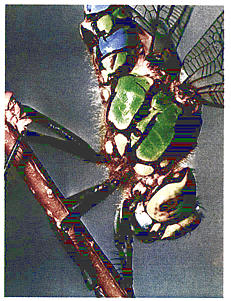
Detail of thorax of A. cyanea. Insect is
about 50% muscle by weight. (Pecile, fig.88, p.89)
Full Size Images
Back to MFI Homepage







